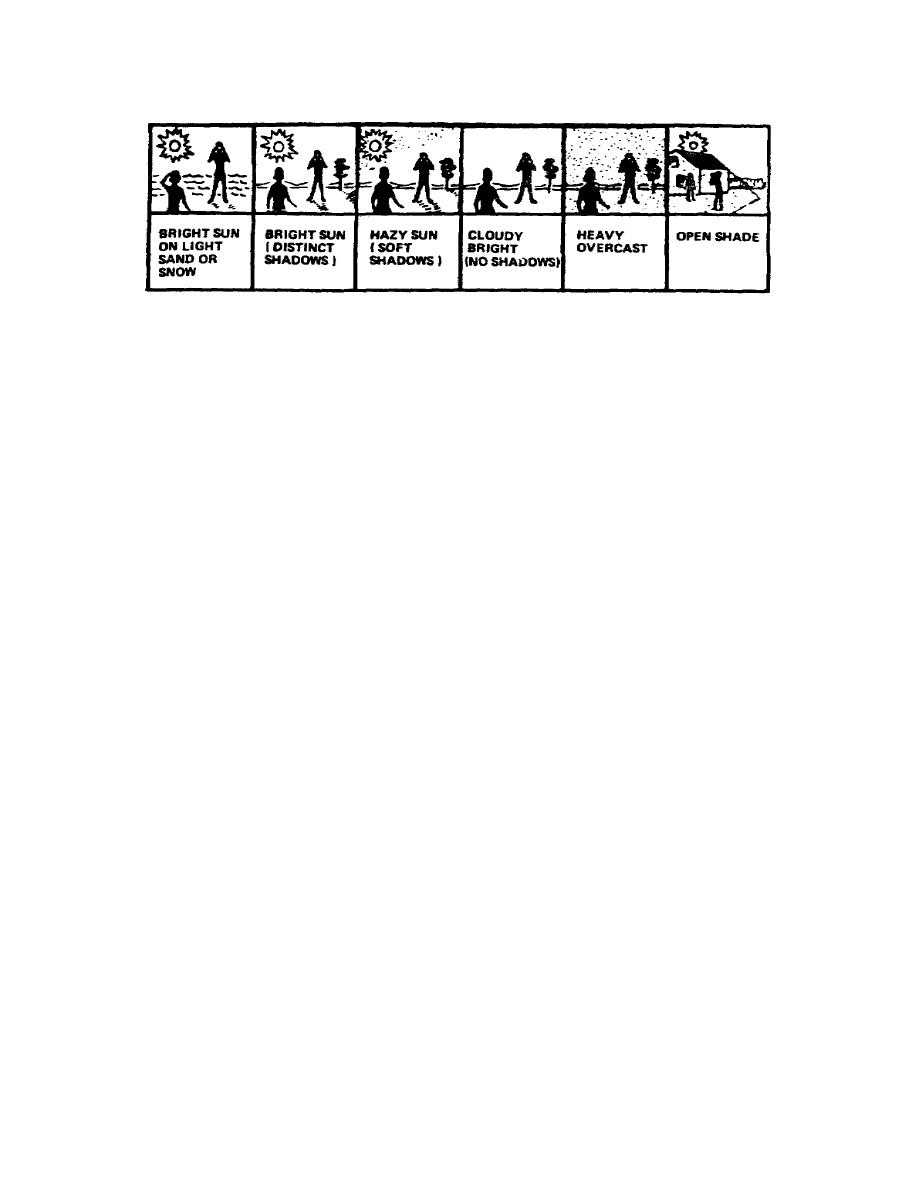
Lesson 3/Learning Event 6
Figure 3-5.
Daylight conditions
2. Direction.
The exposure setting recommended for films exposed during
the daylight conditions of bright or hazy sun on light sand or snow, bright
sun (distinct shadows), and hazy sun (soft shadows) are for scenes which are
front lighted only.
With the cloudy bright (no shadows), heavy overcast,
and open shade conditions, the direction of the light is not apparent
because of the diffusion of the daylight.
a. The amount of daylight reflected from a scene can vary when the
direction of the light is changed in relation to the direction the camera is
pointed.
A scene appears brightest and reflects the most light to the
camera when the light source is behind the camera.
b. Whenever light originating from behind the camera falls upon a
scene, it is termed from lighting. As the camera is moved in an arc around
the scene, more shadow area in the scene is presented.
Therefore, less
light is reflected from the scene.
c. Whenever the light source is in an approximate 90 degree position in
relation to the camera, the light falling upon the scene is termed side
lighting.
As the camera continues to move in the arc, a decrease in the
amount of reflected light to the camera continues until the scene is
directly between the camera and the light source.
d. With this camera position a large area of the scene will be in
shadow resulting in the greatest decrease in reflected light to the camera.
Light falling upon the scene with the camera in this position in relation to
the light source is termed back lighting.
e. When the light reflected from the scene decreases as the direction
of the light changes in relation to the camera, a compensation in exposure
is required. Recommendations on the compensation for this decrease in light
vary.
However, as a general guide photographs of side lighted scenes
usually require an increase of two times (one f/stop) the basic front light
exposure, and photographs of back lighted scenes usually require four times
(two f/stops) the Basic front light exposure.
The final determination of
increased exposure required to compensate for side or back lighting is the
amount of shadow detail desired in the photograph (fig 3-6).
41



 Previous Page
Previous Page
